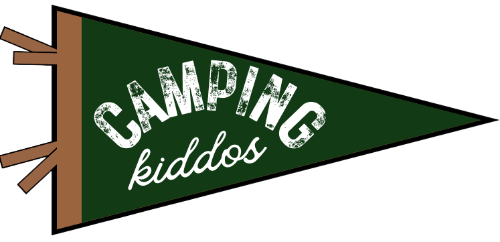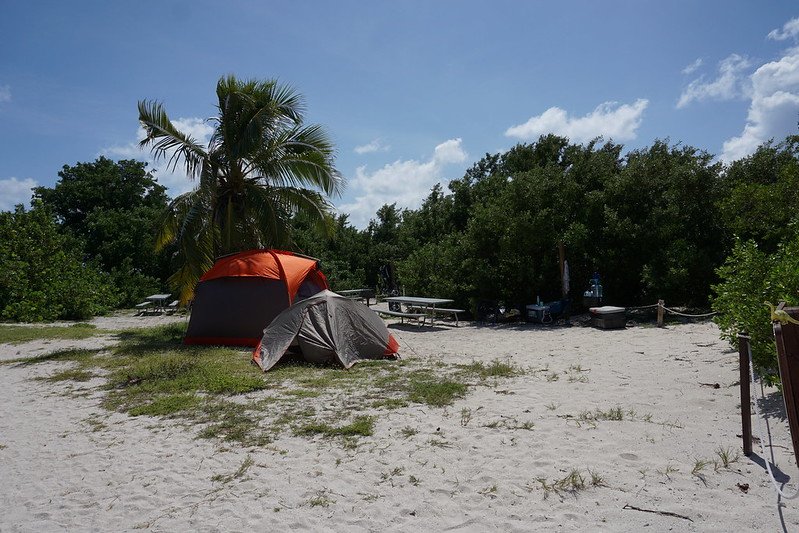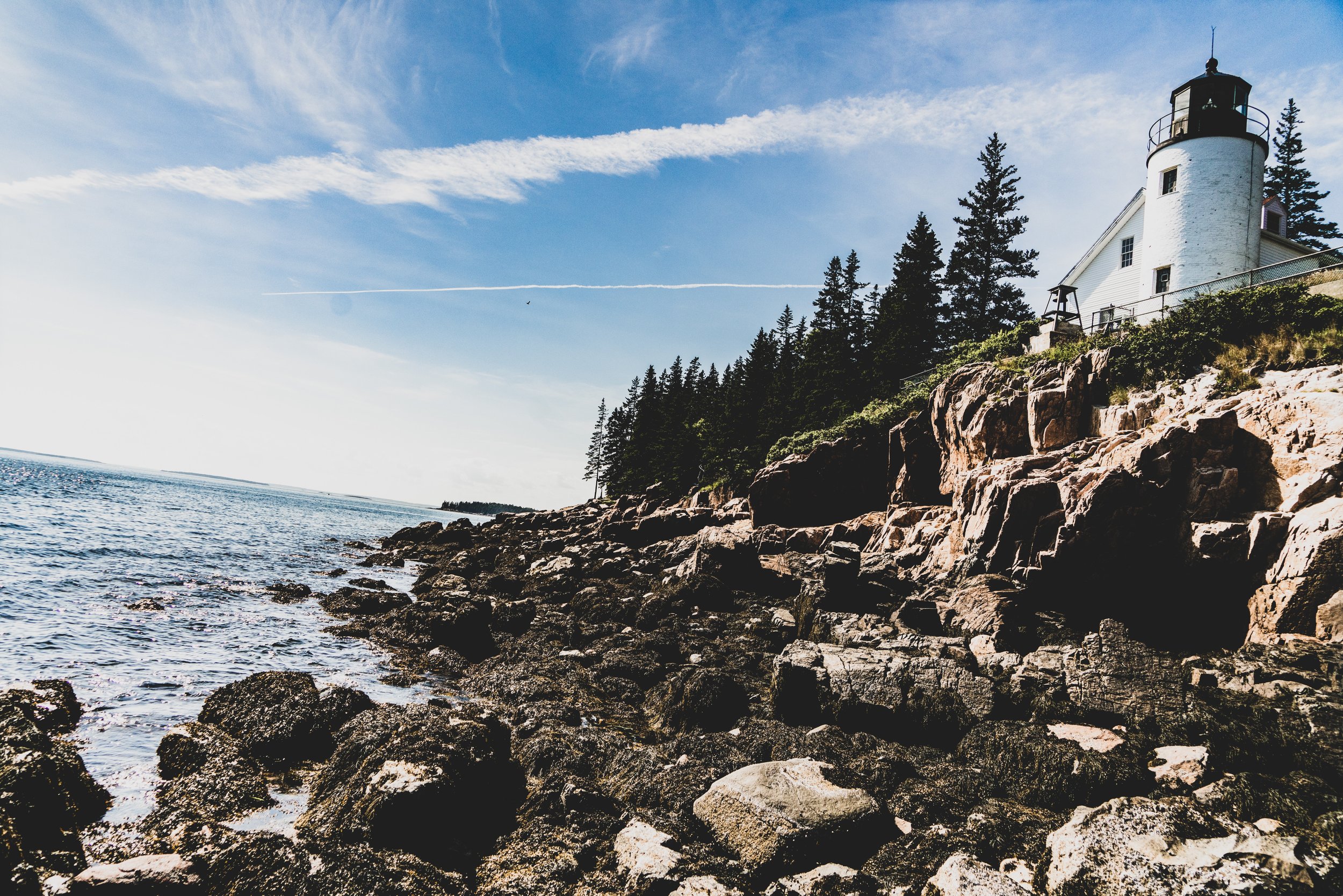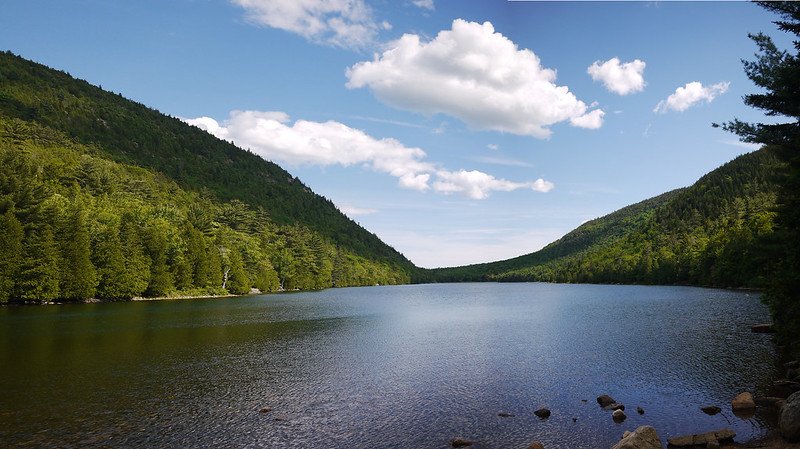Best National Parks on the East Coast
When planning your next family outdoor adventure, don’t overlook the national parks on the East Coast!
While the most iconic national parks can be found west of the Mississippi River, there are several gorgeous protected places on the east coast, too.
From a historic fort surrounded by crystal clear waters to a stout lighthouse perched on a craggy cliff, the East Coast National Parks are filled with natural beauty and rugged adventure.
Here are the best East Coast National Parks! For ease of planning, we’ve also included recommended hotels and campgrounds, must-do activities for the entire family, and more.
This post contains affiliates. If you choose to purchase through the links, I will receive a small commission at no additional charge to you.
East Coast National Parks: What You Need to Know
Don’t forget to collect your Junior Ranger badges, just like our daughter did here at Everglades National Park!
If you look at a map of the US National Parks, you’ll notice that the vast majority of these federally protected places are out west.
Yet, the 6 national parks on the east coast each have something special about them, and we’re here to convince you to visit each and every one of them!
From pristine marine sanctuaries to the ancient Appalachian mountains, the ecosystems in each of the East Coast national parks is unique and incredible.
When traveling with kids to these parks, don’t forget to do the Junior Ranger program at each.
Not only are they free (or very low cost), they’re also a great way to get your kids interested in conservation, biology, geology, history, and ecology.
Below, you’ll find each of the national parks on the East Coast, listed geographically from southernmost to northernmost.
Best East Coast National Parks
Dry Tortugas National Park, Florida
Fort Jefferson on Garden Key is where your exploration of the Dry Tortugas National Park starts. | source
Location: 70 miles off the coast of the Florida Keys
Established as a national park: 1992
What’s Special about The Dry Tortugas
The park is centered around historic Fort Jefferson—and one that served as an infamous prison to the likes of Dr. Samuel Mudd, a doctor who conspired with John Wilkes Booth in the assassination of Abraham Lincoln.
Plus, 99% of the park is water!
The 7 tiny islands you’ll see are only a fraction of what the national park is protecting here.
Must-do Activities in Dry Tortugas National Park
Snorkeling at Dry Tortugas National Park is great for beginners, thanks to the clear, calm water next to the fort.
The ferry ride from Key West to the Dry Tortugas Visitor Center is an activity unto itself.
Settle in for 2 hours of gliding over the most beautiful blue water you’ve ever seen.
Once you arrive at Garden Key, where Fort Jefferson is located, you’ll be able to explore this isolated island paradise in depth.
Wander through the fort and imagine what it would’ve been like to be a prisoner here in the mid-1800s, without air conditioning or any hope of escape.
Then, grab your snorkel and flippers to see the other side of the Dry Tortugas National Park under the water.
This is one of my favorite places to snorkel in Florida, thanks to the clear water and variety of wildlife. On our last trip, I saw several barracuda and a lemon shark!
If you’re traveling with little kids or inexperienced swimmers, stay near to the beach on the swimming area.
However, there’s even more to see if you have stronger swimmers in your group by swimming close to the fort wall away from the beach.
Where to Stay near Dry Tortugas National Park
There aren’t any hotels on the Dry Tortugas, so you’ll need to find a hotel back in Key West.
Our favorite place to stay in Key West is the Southwinds Motel, which is a block off of Duval Street on the southern side of the island.
This Old Florida-style motel is laid back with a homey feel, and is much less expensive than most of the hotels in that part of Key West.
Where to Camp in Dry Tortugas National Park
One of the reserved camping spots in the Dry Tortugas National Park
The Dry Tortugas National Park does allow for overnight camping for up to three days, but you’ll need to carry everything you need—from tent to water to sleeping bag—onto the ferry with you.
It’s also first-come first serve, but all campers are accommodated in a regular spot or in the overflow area.
Read more about camping in the Dry Tortugas National Park.
Explore more of the Florida Keys!
Everglades National Park, Florida
Egret seen on the ranger led tram tour out of the Shark Valley Visitors Center
Location: southern mainland Florida
Established as a national park: 1947
What’s Special about Everglades National Park
The wetlands that cover most of this park provide a home to a diverse range of species.
Once stretching past Orlando, the Everglades wetlands have been filled in, covered up, and reduced to the current 1.5 million acres protected by the national park.
In visiting, you’re contributing to the continued conservation of this important ecosystem, but you’re also getting a glimpse into the wild side of Florida!
NOTE: Due to its sub-tropical location, the Everglades have distinct wet and dry seasons. For the best chance of cool weather, no hurricane, and fewer bugs, plan your visit between November and April.
Must-do Activities in Everglades National Park
Before visiting, you’ll want to determine which entrance you’ll be using as the park is BIG!
If you’re one of the many visitors coming from Miami, consider using the Shark Valley entrance off of Highway 41.
The Camping Kiddos family near the Shark Valley overlook
This rural entrance sees fewer visitors than the main entrance, and it has a wonderful tram ride and overlook tower.
Even the youngest visitors will enjoy the tram ride, which is narrated by a park ranger.
We made it up the gentle incline of the overlook tower behind the visitors center with a 1-year-old and a preschooler!
Elsewhere in the park, take a narrated boat tour (Gulf Coast entrance), slog through the cypress swamp (Royal Palms entrance), and learn about flamingos from the rangers (Flamingo).
Since the park is centered around its watery ecosystem, getting out into that is the best way to learn about the Everglades.
Kids love an Everglades airboat tour, which allows you to skim over the water in search of wildlife viewing.
Exploring the park’s mangroves with a kayak tour will provide your family another side of the Everglades, but one that’s no less important than the iconic sawgrass landscape.
Where to Stay near Everglades National Park
Since the Everglades National Park doesn’t have any hotels onsite, you’ll need to stay outside of the park, but close.
You can stay in Miami or Homestead on the eastern side, or in Everglades City or Ochopee on the western side of the park.
If you truly want to be in the heart of the park, we recommend the Miccosukee Casino and Resort, which is less than 15 minutes from the Shark Valley entrance.
The older Camping Kiddo at South Beach Miami
If you’d prefer to stay in the heart of Miami Beach and drive into the park, consider staying in South Beach.
We like the Cardozo Hotel right on South Beach.
Its Art Deco exterior and trendy location make for a wonderful home base for exploring areas in the Everglades.
Your kids will love the huge park, colorful lifeguard stands, and wide beach just across the street.
Where to Camp in Everglades National Park
There are several areas within the park where campers—both RV campers and tent campers—can set up for the night.
Tent campers have 3 different options for an overnight stay.
For a truly unique experience, you can camp above the water in a chickee, which is a covered wooden pier.
Or, you might choose a beachfront spot right on the Gulf Coast.
13 more campsites are scattered on high spots in the mangrove forest.
All of these sites can be reserved through Recreation.gov.
For RV campers, Everglades National Park has 5 campgrounds plus the Bear Island campground at the Big Cypress WMA, none of which have hookups.
Burns Lake Campground, Monument Lake Campground, and Midway Campground are all on the Tamiami Trail (Highway 41), which runs from Miami to Naples.
Long Pine Key Campground is deeper into the park and is closer to Homestead, Florida.
Flamingo Campground is the most remote of the campgrounds, but is closest to the Gulf Coast.
Explore more of the Everglades!
Biscayne National Park, Florida
The Boca Chita Lighthouse on Boca Chita Key, accessible only by boat
Location: south of Miami, Florida
Established as a National Park: 1980
What’s Special about Biscayne National Park
Much like the Dry Tortugas, Biscayne National Park is known for its underwater adventures just as much as those on land.
The small keys (islands) that make up this national park are lush with greenery and filled with wildlife.
Plus, the islands are surrounded by the clear, sparkling water perfect for kayaking, swimming, and boating.
The park’s proximity to Miami means that it is the perfect add-on to your South Florida vacation.
Plus, Biscayne National Park and Everglades National Park are only about 30 minutes from one another, so you can check off multiple national parks on your next trip to Miami!
Must-do Activities at Biscayne National Park
This small-but-mighty park has something for everyone.
If you’re local and have your own boat, you can cruise the beautiful waters around the national park.
If you’d rather let someone else captain your watery adventures, hop on a guided boat tour of Biscayne Bay.
You can also bring or rent a kayak to do the 7 mile kayak trail across Biscayne Bay between the visitors center and Elliott Key.
Families visiting the park on Saturdays can join the 10 AM kids program, free of charge at the visitors center.
You’ll also find regularly held ranger walks, jetty tours, and beach clean-ups, all of them near the visitors center.
If you’re planning on getting out to the keys, you’ll need to join a boat tour or rent a watercraft yourself in Miami.
There aren’t any public ferries between the visitors center and the islands.
The Dante Fascell Visitors Center at Biscayne National Park has excellent displays on the ecosystems, animals, and plants that make up the park. | source
Where to Stay near Biscayne National Park
The closest hotels are in Homestead, Florida, which is about a 15 minute drive to the Biscayne National Park visitors center.
For its proximity to the entrance and clean rooms, we recommend the Hampton Inn and Suites Homestead Miami South.
Where to Camp in Biscayne National Park
Biscayne National Park has 2 campgrounds for tent campers, one on Boca Chita Key and another on Elliott Key.
However, to get to these, you’ll need to provide your own boat transportation.
Once on the islands, you’ll need to be fully self-sufficient as there aren’t any amenities at either campground.
For RV campers, you’ll need to set up camp elsewhere.
While there are a few campgrounds in nearby Homestead, Florida, we recommend the Larry and Penny Thompson Memorial Park and Campground.
This county-run campground is clean and filled with family amenities like a beach, playground, and hiking trails.
Plus, it’s only about 25 minutes to Biscayne National Park’s visitor center!
Explore more near Biscayne National Park:
Congaree National Park, South Carolina
One of the Camping Kiddos at the Congaree National Park entrance in Hopkins, South Carolina
Location: South Carolina Midlands
Established as a national park: 2003
What’s Special about Congaree National Park
Tucked away in a rural corner of South Carolina, this park is home to the largest swath of old growth hardwoods in the nation.
You’ll also find several champion trees, including a 167 foot tall loblolly pine—all of which have given this park’s trees the nickname “Redwoods of the East.”
While you visit, you can experience tranquility among the cypress swamps that is rare in this part of the state as housing and development encroaches.
Congaree National Park is also one of the least visited national parks in the US, which means you’ll have the trails to yourself most of the time.
It’s also one of the few places in North America where you can experience a synchronous firefly display in late spring each year. Check out my complete guide to the Congaree firefly display here.
Must-do Activities in Congaree National Park
Getting ready to hike into the Bluff Campground at Congaree National Park
While Congaree doesn’t have splashy overlooks like in Arches National Park or the Grand Canyon, there’s a quiet beauty to be found here.
(Perhaps I’m biased as our home base isn’t far from Congaree!)
Don’t miss out on the Harry Hampton Visitor Center, where your kids will love exploring the interactive exhibits about the forest and its unique ecosystem.
Stick around for the short, free movie on how this area was saved from development and ultimately protected on the federal level.
Planning a visit? Here’s my 2 days in Congaree National Park itinerary.
Other top suggestions on what to do here include the Boardwalk Trail, an easy 2.5 mile loop that’s mostly on a raised wooden boardwalk.
Pack a picnic and enjoy lunch al fresco as there aren’t any onsite cafes—and the closest food is either back in Columbia, South Carolina, or down in St. Matthews, SC.
Each season has something unique to offer visitors, but I think there are a few times that are better than others for a trip. Check out my guide to the best time to visit Congaree National Park here.
Hiking and camping elsewhere in South Carolina? Check out these great suggestions:
Where to Stay near Congaree National Park
As Congaree National Park is in a rural area of the South Carolina midlands, you’ll need to find a hotel back in Columbia while visiting.
To be closest to the park, stay near Fort Jackson or in the Forest Acres area, both of which are on the southeast side of Columbia.
The absolute closest hotel to the park’s entrance is the Candlewood Suites- Fort Jackson, which is simple but affordable.
Where to Camp in Congaree National Park
There aren’t any RV overnight spots here, but there are 2 walk-in campgrounds.
Longleaf Campground has a vault toilet and is literally steps from a parking lot, which makes this more convenient for those used to car camping.
Bluff Campground is about a mile hike from that parking lot, and it doesn’t have any amenities, but it is so quiet!
Both campgrounds must be reserved ahead of time through recreation.gov.
There’s also backcountry camping (permit required), if you truly want to get away from it all.
For RV campers, I recommend the campground at Poinsett State Park, which is about a 45 minute drive from Congaree National Park’s entrance.
Explore more in South Carolina!
Shenandoah National Park, Virginia
The Camping Kiddos at Jewell Hollow Overlook in Shenandoah National Park
Location: northern Virginia
Established as a national park: 1935
What’s Special about Shenandoah National Park
Shenandoah National Park is perched atop a series of peaks in the Blue Ridge mountain range, and the views are spectacular.
With 2 visitors centers and dozens of overlooks spread out over the park’s signature Skyline Drive, visitors have ample opportunity for exploring the history, flora, and fauna of this special place.
The park is close to several small towns, which makes sightseeing even easier for extended visits.
Must-do Activities at Shenandoah National Park
We love visiting Shenandoah National Park, thanks to its wide variety of hiking trails and the stunning overlooks on the Skyline Drive.
Camping Kiddos family at the north entrance to the park
If you do nothing else while at the park, drive through at least a portion of the Skyline Drive, which is the only road through the national park.
We’ve compiled our favorite kid friendly hikes in Shenandoah National Park that are wonderful for beginning hikers and little legs.
The visitors centers are wonderful for introducing yourself to the park.
The Big Meadows Visitors Center at mile marker 51 has an in-depth history exhibit that discusses how the park was created.
If you want more suggestions on what to do while visiting, check out our guide to Shenandoah National Park with kids.
Don’t forget to grab the GuideAlong tour for Shenandoah National Park for in-real-time commentary on what to see and do!
Where to Stay at Shenandoah National Park
You don’t have to leave the confines of the park for your entire visit if you don’t want to!
One of the more built-out East Coast national parks, Shenandoah has multiple accommodation options onsite.
Whether you’d like to stay at a mountain top lodge or in a cozy log cabin, Shenandoah has you covered.
My first trip to Shenandoah National Park as a kid was at Skyland lodge, and I remember being dazzled by the views from our room.
Decades later, I still feel that way about the on-site accommodations in the park!
There are lodge rooms, suites and cabins at both Skyline Lodge and Big Meadows Lodge.
More cabins are available at mile marker 57 (Lewis Mountain cabins).
If those are booked, or if you’d like to be closer to stores and restaurants, I recommend staying in Front Royal, which is just a few minutes to the park’s north entrance.
Check rates on hotels in Front Royal here.
Where to Camp at Shenandoah National Park
If you’re willing to pull your camper along Skyline Drive, you can stay inside the park’s campgrounds.
NOTE: While the road isn’t particularly steep, it is curvy with a maximum speed of 35.
There is also a covered tunnel with a maximum height of 12’8” which procludes bigger RVs and trailers from going through t hat portion of the park.
You’ll need to be self-sufficient in the Shenandoah National Park campgrounds as there aren’t any water, electric, or sewer hookups.
The campgrounds are closed from late fall to early spring, so you’ll need to stay outside of the park if you’re visiting in the winter and early spring.
If you need outside accommodations, I recommend the nearby Shenandoah River State Park campground, which is peaceful with great hiking.
Explore more in the Shenandoah Valley and beyond!
Acadia National Park, Maine
The iconic Bass Harbor Lighthouse in Acadia National Park, Maine
Location: south of Bangor, Maine
Established as a national park: 1919
What’s Special about Acadia National Park
The oldest national park on the east coast, Acadia is known for its dramatic, rocky coastlines, intense fall foliage, and 158 miles of hiking trails.
The stunning views and natural experiences bring more than 4 million visitors to this unspoiled island in Maine.
Must-do Activities in Acadia National Park
Cadillac Summit Road during the early spring can be icy! | source
A great way to introduce yourself to Acadia National Park is by driving the short, but spectacular Cadillac Summit Road.
Much like the Skyline Drive in Shenandoah National Park (above), the Cadillac Summit Road is a paved road that highlights scenic overlooks throughout the park.
NOTE: Don’t forget to reserve a car pass if you’re visiting between late May and late October.
The summers are the park’s peak season, so the NPS is trying to keep vehicle traffic to a manageable level by requiring vehicle passes during that time.
Download a self-paced Acadia National Park audio guide to make your park drive more exciting.
If you’d rather not fight the crowds, you can jump on the free Island Explorer, a bus service that carries visitors throughout the park and back into the nearby town of Bar Harbor (another must-visit in this area!).
While the Island Explorer bus system doesn’t go up the Cadillac Summit Road, it will take you to other scenic areas of the park, including the iconic Bass Harbor Head Lighthouse (take bus #7 to Seawald Campground, the transfer to bus #11).
Keep in mind that the park is spread out over 3 main areas, the Southwest Harbor, the Northeast Harbor, and Winter Harbor.
The Southwest Harbor and Northeast Harbor are accessible by car, while the Winter Harbor best accessed by a passenger ferry.
Tiny Duck Harbor to the south is remote and accessible only by a passenger ferry from Stovington.
If you’d like to embrace some of the park’s history, booking a horse-drawn carriage is a fun and unusual way to see Acadia.
The park only has one company offering these, Carriages of Acadia, so reserve your summer and early fall dates ahead of time.
You can also explore the park’s tidepools, go on a hike, try your hand at fishing, or attend a ranger talk.
Dive more deeply into what you’re seeing and doing in the park with the Arcadia National Park tour on the GuideAlong App.
This app is our go-to when visiting national parks as the guide plays automatically based on your GPS location and doesn’t require a cell signal once the tour is downloaded to your phone.
Acadia National Park isn’t all craggy coastlines as shown here at Bubble Pond.
Where to Stay in Acadia National Park
The park does not offer onsite accommodations outside of its campgrounds.
However, there are many cute seaside towns scattered around Acadia National Park, so you can easily drive to your national park destination each day.
We’d suggest staying at one of the hotels in Bar Harbor, as this is the largest town in the area, and it is close to shopping, dining, and other activities.
Where to Camp in Acadia National Park
Acadia National Park has 4 campgrounds within its boundaries.
Schoonic Woods Campground is the only one with partial RV hookups. You can choose from sites with water only, or water and electric hookups.
Backwoods Campground and Seawall Campground are open to tent campers and RV campers, though no hookups are provided in any sites.
Duck Harbor Campground is only for tent campers, and it is accessible only by a ferry from Stonington. There are primitive shelters available, as well as potable water and a composting toilet.
The best campground with full hookups outside of the park would be the Bar Harbor/ Oceanside KOA Holiday, which is conveniently located between the Southwest and Northeast Harbors.
Even more activities in Bar Harbor:
Explore even more of the US with the best national parks on the West Coast!

















